MONUMENT BAY, MANITOBA — Make no mistake about it, Mega Precious Metals’ (TSXV: MGP) Monument Bay project is a serious gold play. With 3.6 million global ounces of gold already outlined, this property in northeastern Manitoba has the chops to hang with the big boys on the basis of the yellow metal alone.
But Monument Bay is setting itself apart from the pack with a metal known more for hardening steel than protecting against the fall of fiat currencies.
In mid-2012 Mega made an unlikely discovery: leftover core from past operators Noranda and Bema Gold held a valuable metal that no one had previously thought to test for.
“When we got in a room together and turned the lights off and shined the UV light on the core, it was a ‘wow’ moment. I was blown away,” Mega’s president and CEO Glen Kuntz says. “I’ve seen tungsten in little veinlets before, but I’ve never seen it in veins.”
Since that fateful day, Mega has been busy re-assaying 130,000 metres of core for more of the metal. It’s no small task, considering Mega had already been assaying the vast stores of historic core on-site, along with its own freshly drilled material for gold.
But the extra work has been paying off, as Mega estimates that adding tungsten will increase the gold equivalent grade for the project by 20–30%. But the specifics won’t be known until a preliminary economic assessment is ready in the fourth quarter.
“It completely changes the economics of the project,” says Ryus St. Pierre, Mega’s senior project geologist. “For a deposit of 3.6 million global oz. gold, another 30% is 1 million equivalent oz. gold. That’s huge.”
The tungsten had been hiding all those years in scheelite veins within the gold-mineralized footprint. St. Pierre says that its greyish color — as opposed to the common pinkish–orange — blended it with the vein’s other minerals, camouflaging if from past operators.
It took the fresh eyes of a master’s student — whose studies are being funded by Mega — to help uncover it.
“I came up here in 2011 to get my head in the game and see what was going on,” St. Pierre says. “I took samples and looked at it under the microscope. There was a mineral I didn’t recognize, so I went through textbooks and I realized, OK, it was scheelite. Then I got a UV light, shined it on the samples and started seeing that, yes, there was a substantial amount.”
The tungsten discovery punched another hole in a geological model that was lacking in many ways. The model used by all previous operators — which assumes that the property hosted only gold mineralization, and only in shear zones along the edges of a large dyke — had been lacking when Monument discovered that the dyke itself was mineralized, and that mineralization was at more shallow depths than previously thought.
The discovery was a game changer: what was once considered a middle-of-the-road gold project now has a lot of potential, thanks to the dyke that forms most of the property’s main deposit: Twin Lakes. And that was before the tungsten discovery was even made.
Realizing Monument Bay’s true gold potential led Mega back to the vast cores that came with the ground when since it acquired it in 2010. Mega had already been re-assaying 130,000 metres of core on the property before the tungsten discovery through an endeavour known as the old-core assay program (OCAP).
Sixty percent of the core has been re-assayed for gold, while 30% has been re-assayed for tungsten.
The work on the gold side has already paid huge dividends, as the company has added 650,000 oz. gold to its resources via OCAP. And it has added those ounces for just $1 per oz.
“There’s been 30 years of gold exploration here and one year of tungsten exploration,” Kuntz says. “So you have to put it into perspective, but the first step was metallurgical testing [of the tungsten], and now we know that it is recoverable — the next step is to know how much we are going to be able to recover.”
While it’s too early to know how much tungsten will impact the project economics, the discovery has already played a part in Mega realizing some success on the financing side. Pacific Road Resources Funds, a private equity firm with a focus on the minerals sector, completed a significant financing deal with Mega late last year, with negotiations beginning after the tungsten was discovered.
Pacific Road made an initial US$3-million investment in Mega, but this could rise to US$40 million and a 19.9% stake in Mega if Pacific Road exercises all of its options. If it does, the capital would be enough to take Monument Bay right through feasibility.
The property
Monument Bay sits near the Ontario border 570 km northeast of Winnipeg, with the nearest communities being Red Sucker Lake First Nation (60 km southwest) and God’s Lake Narrows (100 km west).
The project is made up of three deposits: Twin Lakes, Mid East and the AZ zone. Combined, they have open-pit measured and indicated resources of 67 million tonnes grading 1.3 grams gold for 2.88 million oz., and underground measured and indicated resources of 133,000 tonnes grading 5.5 grams gold for 24,000 oz. There are also open-pit inferred resources of 25.9 million tonnes grading 0.7 gram gold for 602,000 oz. gold.
Twin Lakes is the big daddy of the three, as it is responsible for 3 million of the global 3.6 million gold oz. outlined so far. Mineralization at Twin Lakes is associated with a feldspar–phyric dyke, which is cut by gold-bearing quartz veins. The dyke goes down from an average 30 metres thick at the western end of the Twin Lakes zone to 10 metres at the eastern end.
The Mid East zone sits 3 km east and along strike from Twin Lakes, while the AZ zone is situated in the footwall of Twin Lakes. Mega says the best comparison for the mineralization style at the site is Timmins’ famed Hollinger mine, which also mined gold and tungsten from a dyke with shear zones.
The Twin Lakes deposit is aptly named, as half of it sits underwater. At just 1.5 metres deep, however, the lake is frozen right to the bottom in the winter, which brings advantages when landing large supply aircraft, or diverting the water to make way for a mine.
Kuntz says such diversion would be made less complicated by Mega following the flow of the watershed, with the diversion allowing fish to bypass a future open pit. But the moment a mining company considers touching water it has to go through the federal Department of Fisheries and Oceans, and Kuntz estimates that getting the necessary permits could take two to three years.
“We’re confident that diverting the water is not an engineering challenge,” he says. “We have a natural way to divert it, and from that perspective, it is straight forward. There’s not a need for any monster dykes or draining.”
He believes the project will also benefit on the permitting front from its reasonable size.
“We’re looking at a small footprint here. We’re not trying to build a Detour Lake,” he says. “We’ll be trying to build a small 100,000 to 120,000 oz. a year, 5,000-tonne-per-day operation, which is pretty small for an open pit, but much easier to control.”
But if diverting the water isn’t cause for much concern, than what will be the big
development hurdle going forward?
“If anything, the challenge will be more around people getting an understanding of what we are trying to achieve,” he says.
While the company has the support of the family most connected to the land — the Disbrowe’s — it has had to deal with some opposition from the Red Sucker Lake First Nation community.
Kuntz says the dispute involves a few members of the Red Sucker Lake’s council, but not the whole community.
“Most people in the community have no issues with our company,” Kuntz says. “It’s specific. That said, the government of Manitoba and Mega are trying to reach out to have a relationship with the current group. We’ve made multiple attempts and we will continue to try, but we’re not stopping what we’re doing here.”
Kuntz estimates that 10% of Mega’s project budget is spent in the local community in the form of salaries, donations and air travel. That’s a large number for a company that is years away from generating positive cash flow.
Carl Disbrowe — who is part of the aforementioned family with claims on the land being developed by Mega, and who serves as Mega’s community engagement coordinator — is in the midst of putting together the company’s latest community outreach program.
“We plan to have band members come to the project and see for themselves what we are doing, rather than be misinformed by certain people,” Disbrowe says. “Starting from today we are making some phone calls to see how many people we can get to come out.”
Origins
Mega put its stamp on Monument Bay three years ago, when it picked up the project by acquiring Rolling Rock Resources in an all-share deal that closed in late 2010.
For Kuntz it was a return to the familiar, as he worked on the project while with Noranda in 1989, and long admired its potential.
But before he could get reacquainted with the project, he had to deal with what was left behind.
“Mega did a tremendous job of cleaning up what was here — it was quite a mess,” Disbrowe says.
Disbrowe, who is part of the First Nation community, spent time with Rolling Rock when it first acquired the project from Bema in 2006.
“I wasn’t here for most of the time Rolling Rock was here, just in the beginning, but that was still early in my mining career and I didn’t know the right way to do things at that point,” he explains.
Kuntz made cleaning up the debris left behind by Rolling Rock a priority, and stopped all exploration work at the site until the 20-day clean-up was done.
With the site cleaned and the rocks offering plenty of riches, Kuntz turned his attention to making the site efficient.
“We did a lot of operational changes, which has allowed us to keep exploration going in some pretty lean times,” he says.
One of his first decisions was to bring in fuel bladders to replace fuel barrels. That efficiency has brought big savings: Kuntz says Rolling Rock was paying $8 per litre, but Mega has brought that cost down to just $3 per litre by using the bladders.
Another improvement in efficiency came from installing furnaces that burn wood pellets. This saves the company $300,000 per month in heating costs.
Drilling costs have also been slashed as with Bema Gold they were coming in at US$400 per metre, whereas Mega has them below US$200.
A big reason for the savings in drilling is that Bema saw the project as a future underground mine, and did more expensive, deeper drilling — which left the top 100 metres sparsely drilled.
“Our drilling is focusing on the top 100 metres, and so is OCAP,” Kuntz says. “So we will probably double or triple resources in the top 100 metres.”
Mega has made shallower mineralization a priority, as it will be the source of a future high-grade starter pit, with average grades of 2.7 grams gold and a 2-to-1 strip ratio.
This year’s drill program will expand the pit and test shallow, near-surface targets that are already identified.
The site has seen 150,000 metres drilled over the years, with Mega responsible for 55,000, which makes it the biggest driller after by Bema.
Kuntz is also keeping the corporate overhead costs low, as the company shares an office in Thunder Bay with Premier Gold Mines (TSX: PG; US-OTC: PIRGF) and Wolfden Resources (TSXV: WLF). Investors familiar with those names would know they’re associated with Ewan Downie, and would correctly infer his reach into Mega.
Downie — who has built a stellar reputation on the mining circuit by selling the original Wolfden Resources to Zinifex for $360 million, and for building up Premier Gold — serves as a director of Mega.
With people like Downie involved and a lot of cost efficiency, Kuntz is confident that Monument Bay has a solid foundation.
“I think in a tough market you need four things,” Kuntz says. “You need a good project with lots of potential; you need an audience that cares and feels, then can get value from trading; you need a good team; and you need a little luck. Those are the four posts on a stool, and they all have to work together — otherwise the stool falls over.”

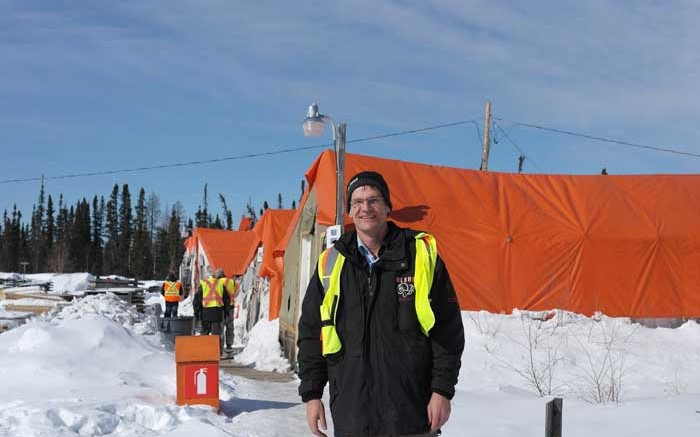
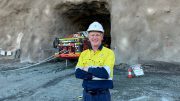
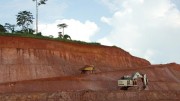
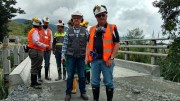
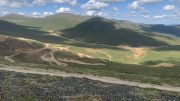
Be the first to comment on "Site visit: Mega Precious goes monumental"